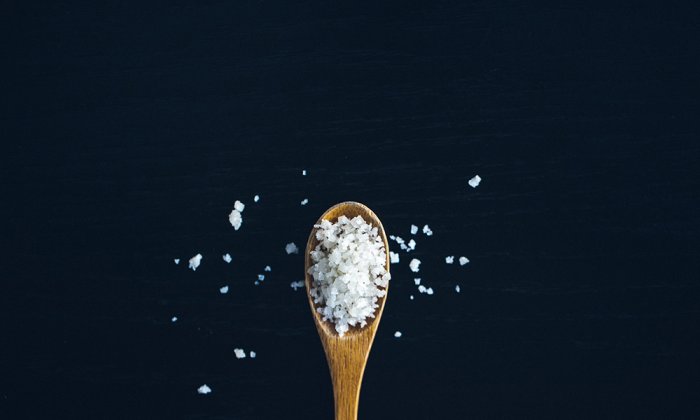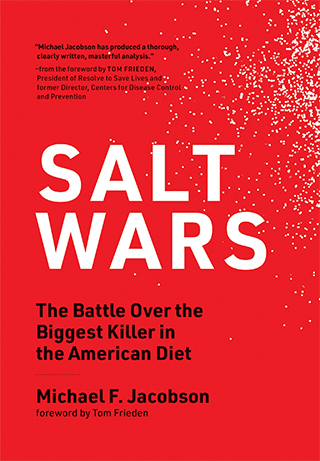Sea Salt Is No Health Potion

In a 2013 opinion survey of 1,000 U.S. adults, 59 percent believed that sea salt contained less sodium than regular table salt. In fact, that is rarely the case. Most sea salts — and table salt — are at least 98 percent sodium chloride, with other minerals present in such small amounts that they have no effect on health.

All salt is technically “sea” salt. Even the salt dug out of salt mines, the source of most table salt, is sea salt, having been left by long-dried-out seas. Whether it is derived from the industrial or artisanal dehydration of ocean water a year ago or by nature over millions of years, salt is almost entirely sodium chloride, especially after it is washed and purified. In that sense, creative marketers could call ordinary Morton salt, obtained from mines deep underground, “ancient sea salt untouched by humans for millions of years.”
The Culinary Institute of America recommends that chefs use sea salt, not because it is lower in sodium, but because it might improve flavor and is label friendly. Indeed, stating “a touch of sea salt” on a menu or label might suggest to consumers that the product is healthier and allow manufacturers to use a little less salt.
Stephanie L. Drake and MaryAnne Drake, at the Department of Food, Bioprocessing, and Nutrition Sciences at North Carolina State University, compared the mineral content and taste of 38 different sea salts, along with table salts and “lite” salts. Two salts from Hawaii — Haleaka Red salt and Kilauea Black salt — had almost 25 percent less sodium than table salt.
In the taste tests organized by the Drakes, New Zealand organic sea salt, Sonoma salt from California, and numerous others tasted a little different from table salt. But those tests were done with salt crystals and not salt added to foods, which could mask any taste differences. I tried adding fleur de sel, Himalayan pink salt, and a couple of other sea salts to low-sodium vegetable broth and to unseasoned brown rice and could not taste any difference.
But I admit that my palate is not the most refined. “Cook’s Illustrated,” considered by many to be the arbiter of all cooking controversies, taste-tested half a dozen salts. It concluded:
The results were definitive: Tasters couldn’t tell one salt from another in cooked applications. Only when the salts were sprinkled over slices of beef tenderloin could tasters detect subtle flavor nuances. . . . Our advice? Save your money and use fancy sea salts only for garnishing.
A Swedish company, Saltwell AB, harvests sea salt in Chile that is naturally high in potassium — about 30 percent — and so contains that much less sodium. Saltwell tells food manufacturers that they can label foods made with that specialty salt simply as “salt” to avoid highlighting the presence of chemical-sounding potassium, but I’m not sure that is consistent with FDA rules. Many kidney patients and people taking certain antihypertensive medications need to avoid too much potassium.
If you flew from Chile to Israel, you could go to the Dead Sea and obtain salt that is even lower in sodium. Salona Low Sodium Sea Salt consists mostly of potassium and magnesium salts and has only one-twentieth as much sodium as table salt. Its manufacturer, a Danish company, says that it can replace up to half the normal amount of salt in foods.
Some marketers make sea salt out to be a panacea for practically every ill. To pick one egregious example, consider Dr. Josh Axe’s advice. Axe, who says he is a certified doctor of natural medicine, doctor of chiropractic, and clinical nutritionist, touts sea salt as an almost magical mineral that regulates blood pressure, increases energy, helps reduce signs of aging, improves brain function, eliminates mucus buildup, supports libido, and much more. Axe and others often assert that sea salt contains dozens of minerals that regular salt does not have. That is often true, but the amounts of those minerals are typically trivial and have a trivial effect on health.
If you are surprised that most sea salts are just as unhealthy as table salt, you may be shocked by their prices. For example, SaltWorks sells a 4-ounce package of Fleur de Sel (obtained for hundreds of years from the Rhône river delta west of Marseille, France) for $10.99. Or you could spend $9.50 for 1.5 ounces of Icelandic Flake Sea Salt or Kala Namak Sulphur Salt. Or, at Salt Cellar, you could spend $15 for 1.5 ounces of Black Truffle Sea Salt. Maybe those high prices encourage people to use less salt, or maybe they contribute to a mystique around sea salt. In any case, you could buy a canister of table salt for about 60 cents per pound, roughly one-hundredth to one-fiftieth the price of some fancy artisanal salts.
My bottom line on sea salt: Use a little, especially as a garnish, if you like its taste more than regular salt, but do not believe any of the hogwash about its health benefits.
Michael F. Jacobson is Cofounder of the Center for Science in the Public Interest. After serving as Codirector or Executive Director of CSPI for more than four decades, he is now creating the National Food Museum. He is the author of, among other books, “Six Arguments for a Greener Diet” and “Salt Wars,” from which this article is excerpted.



